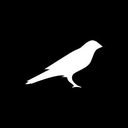-
 bitcoin
bitcoin $122659.385674 USD
0.52% -
 ethereum
ethereum $4484.113342 USD
-0.09% -
 bnb
bnb $1304.229256 USD
-0.85% -
 tether
tether $1.000204 USD
-0.03% -
 xrp
xrp $2.860636 USD
-0.51% -
 solana
solana $227.288799 USD
2.36% -
 usd-coin
usd-coin $0.999805 USD
0.01% -
 dogecoin
dogecoin $0.252837 USD
1.18% -
 tron
tron $0.341149 USD
1.12% -
 cardano
cardano $0.830507 USD
0.33% -
 hyperliquid
hyperliquid $45.792319 USD
0.04% -
 chainlink
chainlink $22.422164 USD
1.55% -
 ethena-usde
ethena-usde $1.000283 USD
0.01% -
 sui
sui $3.511389 USD
0.83% -
 stellar
stellar $0.385276 USD
-0.44%
Do I need to set a stop-profit point for LTC trading? How to determine a reasonable target?
Setting a stop-profit point for LTC trading helps secure profits and manage risk, using historical data and technical indicators to determine a reasonable target.
May 01, 2025 at 08:15 am

Trading Litecoin (LTC) can be an exciting yet challenging endeavor. One of the critical decisions traders face is whether to set a stop-profit point, also known as a take-profit order. This article delves into the necessity of setting a stop-profit point for LTC trading and provides a comprehensive guide on determining a reasonable target.
Understanding Stop-Profit Points
A stop-profit point is an order placed with a broker to sell a security when it reaches a certain price level, aiming to lock in profits. For LTC traders, setting a stop-profit point can help manage risk and ensure that gains are realized before the market turns unfavorable. The decision to set a stop-profit point depends on various factors, including trading strategy, risk tolerance, and market conditions.
Benefits of Setting a Stop-Profit Point for LTC Trading
Setting a stop-profit point can offer several advantages for LTC traders. Firstly, it helps in securing profits without the need for constant market monitoring. This is particularly beneficial for traders who cannot afford to watch the market 24/7. Secondly, it aids in disciplined trading, preventing emotional decisions that could lead to holding onto a position for too long. Finally, it can protect against sudden market downturns, ensuring that profits are not eroded by unexpected price drops.
Determining a Reasonable Target for LTC Trading
Determining a reasonable target for LTC trading involves a combination of technical analysis, market sentiment, and personal trading goals. Here are some steps to help you set a reasonable stop-profit point:
Analyze Historical Data: Look at historical price movements of LTC to identify patterns and levels where the price has previously peaked. This can give you an idea of potential resistance levels.
Use Technical Indicators: Employ technical indicators such as moving averages, RSI, and Bollinger Bands to identify potential price targets. For instance, if LTC is trading above its 50-day moving average, a reasonable target might be the next significant resistance level identified by these indicators.
Consider Market Sentiment: Keep an eye on news and events that could affect LTC's price. Positive news might suggest setting a higher target, while negative news could warrant a more conservative approach.
Set Realistic Goals: Based on your risk tolerance and trading strategy, set a target that aligns with your overall investment goals. For example, if you are aiming for a 10% return on your LTC investment, calculate the price at which you would need to sell to achieve this goal.
Implementing a Stop-Profit Order for LTC
To implement a stop-profit order for LTC, follow these detailed steps:
Choose a Trading Platform: Select a reliable cryptocurrency exchange that supports stop-profit orders for LTC. Popular platforms include Binance, Coinbase Pro, and Kraken.
Log into Your Account: Access your trading account on the chosen platform.
Navigate to the LTC Trading Pair: Find the LTC trading pair you are interested in, such as LTC/USDT or LTC/BTC.
Place the Order:
- Go to the order section of the trading interface.
- Select 'Stop-Limit' or 'Take-Profit' order type, depending on the platform's terminology.
- Enter the stop price, which is the price at which you want the order to be triggered.
- Set the limit price, which is the price at which you want the order to be executed once triggered.
- Specify the amount of LTC you want to sell.
- Review and confirm the order details.
Monitor and Adjust: Keep an eye on the market and be prepared to adjust your stop-profit order if necessary. Market conditions can change rapidly, and flexibility is key.
Factors to Consider When Setting a Stop-Profit Point
When setting a stop-profit point for LTC, consider the following factors:
Volatility: LTC, like other cryptocurrencies, can be highly volatile. A higher volatility might suggest setting a closer stop-profit point to lock in gains quickly.
Time Frame: Your trading time frame can influence your target. Short-term traders might set more aggressive targets, while long-term investors might aim for higher, more distant targets.
Risk-Reward Ratio: Evaluate the potential reward against the risk. A common approach is to aim for a risk-reward ratio of at least 1:2, meaning the potential profit should be at least twice the potential loss.
Market Trends: Align your stop-profit point with the current market trend. In a bullish market, you might set a higher target, while in a bearish market, a more conservative target might be appropriate.
Adjusting Stop-Profit Points
As market conditions change, it may be necessary to adjust your stop-profit points. Here are some scenarios where adjustments might be warranted:
Price Breakthroughs: If LTC breaks through a significant resistance level, you might want to adjust your stop-profit point higher to capture more potential gains.
Market Reversals: If the market shows signs of reversing, consider lowering your stop-profit point to secure profits before a potential downturn.
News and Events: Major news or events can impact LTC's price. Stay informed and be ready to adjust your stop-profit point accordingly.
Personal Goals: If your trading goals change, such as shifting from short-term to long-term trading, adjust your stop-profit points to align with your new strategy.
Frequently Asked Questions
Q: Can I set multiple stop-profit points for LTC trading?A: Yes, some trading platforms allow you to set multiple stop-profit points for a single position. This can be useful for taking partial profits at different price levels, allowing you to manage your risk and reward more effectively.
Q: How often should I review and adjust my stop-profit points for LTC?A: It's advisable to review your stop-profit points regularly, at least daily if you are a short-term trader, and weekly if you are a long-term investor. Adjustments should be made based on market conditions, new information, and changes in your trading strategy.
Q: What should I do if my stop-profit order is not executed at the desired price?A: If your stop-profit order is not executed at the desired price, it could be due to market volatility or slippage. In such cases, consider using a stop-limit order instead of a stop-market order to have more control over the execution price. Also, ensure that your stop-profit point is set at a realistic level based on current market conditions.
Q: Is it better to set a stop-profit point or to manually close my LTC position?A: Setting a stop-profit point can be more beneficial for traders who cannot monitor the market constantly. It ensures that profits are locked in automatically. However, if you have the time and discipline to monitor the market closely, manually closing your position can allow for more flexibility and potentially better timing.
Disclaimer:info@kdj.com
The information provided is not trading advice. kdj.com does not assume any responsibility for any investments made based on the information provided in this article. Cryptocurrencies are highly volatile and it is highly recommended that you invest with caution after thorough research!
If you believe that the content used on this website infringes your copyright, please contact us immediately (info@kdj.com) and we will delete it promptly.
- Coin, 2025, Bull Run: What's the Hype?
- 2025-10-10 04:45:14
- Bluey Ballot Bonanza: Real Life Coin Tips from Down Under!
- 2025-10-10 05:05:13
- Toncoin (TON) Price Analysis: Crash or Correction? What's a New Yorker to Do?
- 2025-10-10 04:45:14
- Bluey Ballot Bonanza: Real Life Coin Tips from Down Under!
- 2025-10-10 04:50:01
- HBAR, SHIB, BlockDAG: Crypto's Fast Lane to 2025 and Beyond
- 2025-10-10 05:05:13
- Worldcoin (WLD): Navigating the Accumulation Zone Like a Pro
- 2025-10-10 05:10:00
Related knowledge

Practical parameter settings for a Bitcoin multi-timeframe moving average system
Sep 18,2025 at 10:54pm
Optimizing Timeframe Combinations for Bitcoin Trading1. Selecting appropriate timeframes is crucial when building a multi-timeframe moving average sys...

How can I filter out false breakouts in Dogecoin high-frequency trading?
Sep 22,2025 at 01:00am
Understanding False Breakouts in Dogecoin Trading1. A false breakout occurs when Dogecoin's price appears to move beyond a defined support or resistan...

Techniques for identifying tops and bottoms in the Bitcoin on-chain NVT model
Sep 20,2025 at 07:54pm
Understanding the NVT Model in Bitcoin Analysis1. The Network Value to Transactions (NVT) ratio is often described as the 'P/E ratio' of the cryptocur...

What does the surge in open interest in Bitcoincoin futures mean?
Sep 20,2025 at 11:18pm
Understanding the Surge in Dogecoin Futures Open Interest1. A surge in open interest within Dogecoin futures indicates a growing number of active cont...

How can I use the Ethereum USDT premium to gauge market sentiment?
Sep 18,2025 at 11:55pm
Understanding the Ethereum USDT Premium1. The Ethereum USDT premium refers to the price difference between USDT (Tether) traded on Ethereum-based plat...

What should I do if Ethereum staking yields decline?
Sep 20,2025 at 06:18am
Understanding the Causes Behind Declining Ethereum Staking Yields1. The Ethereum network transitioned to a proof-of-stake consensus mechanism with the...

Practical parameter settings for a Bitcoin multi-timeframe moving average system
Sep 18,2025 at 10:54pm
Optimizing Timeframe Combinations for Bitcoin Trading1. Selecting appropriate timeframes is crucial when building a multi-timeframe moving average sys...

How can I filter out false breakouts in Dogecoin high-frequency trading?
Sep 22,2025 at 01:00am
Understanding False Breakouts in Dogecoin Trading1. A false breakout occurs when Dogecoin's price appears to move beyond a defined support or resistan...

Techniques for identifying tops and bottoms in the Bitcoin on-chain NVT model
Sep 20,2025 at 07:54pm
Understanding the NVT Model in Bitcoin Analysis1. The Network Value to Transactions (NVT) ratio is often described as the 'P/E ratio' of the cryptocur...

What does the surge in open interest in Bitcoincoin futures mean?
Sep 20,2025 at 11:18pm
Understanding the Surge in Dogecoin Futures Open Interest1. A surge in open interest within Dogecoin futures indicates a growing number of active cont...

How can I use the Ethereum USDT premium to gauge market sentiment?
Sep 18,2025 at 11:55pm
Understanding the Ethereum USDT Premium1. The Ethereum USDT premium refers to the price difference between USDT (Tether) traded on Ethereum-based plat...

What should I do if Ethereum staking yields decline?
Sep 20,2025 at 06:18am
Understanding the Causes Behind Declining Ethereum Staking Yields1. The Ethereum network transitioned to a proof-of-stake consensus mechanism with the...
See all articles


























![🚨IS VECHAIN (VET) A DEAD COIN ?? PRICE ANALYSIS [GET READY NOW] 🚨IS VECHAIN (VET) A DEAD COIN ?? PRICE ANALYSIS [GET READY NOW]](/uploads/2025/10/09/cryptocurrencies-news/videos/vechain-vet-dead-coin-price-analysis-ready/68e7b200b067b_image_500_375.webp)















































